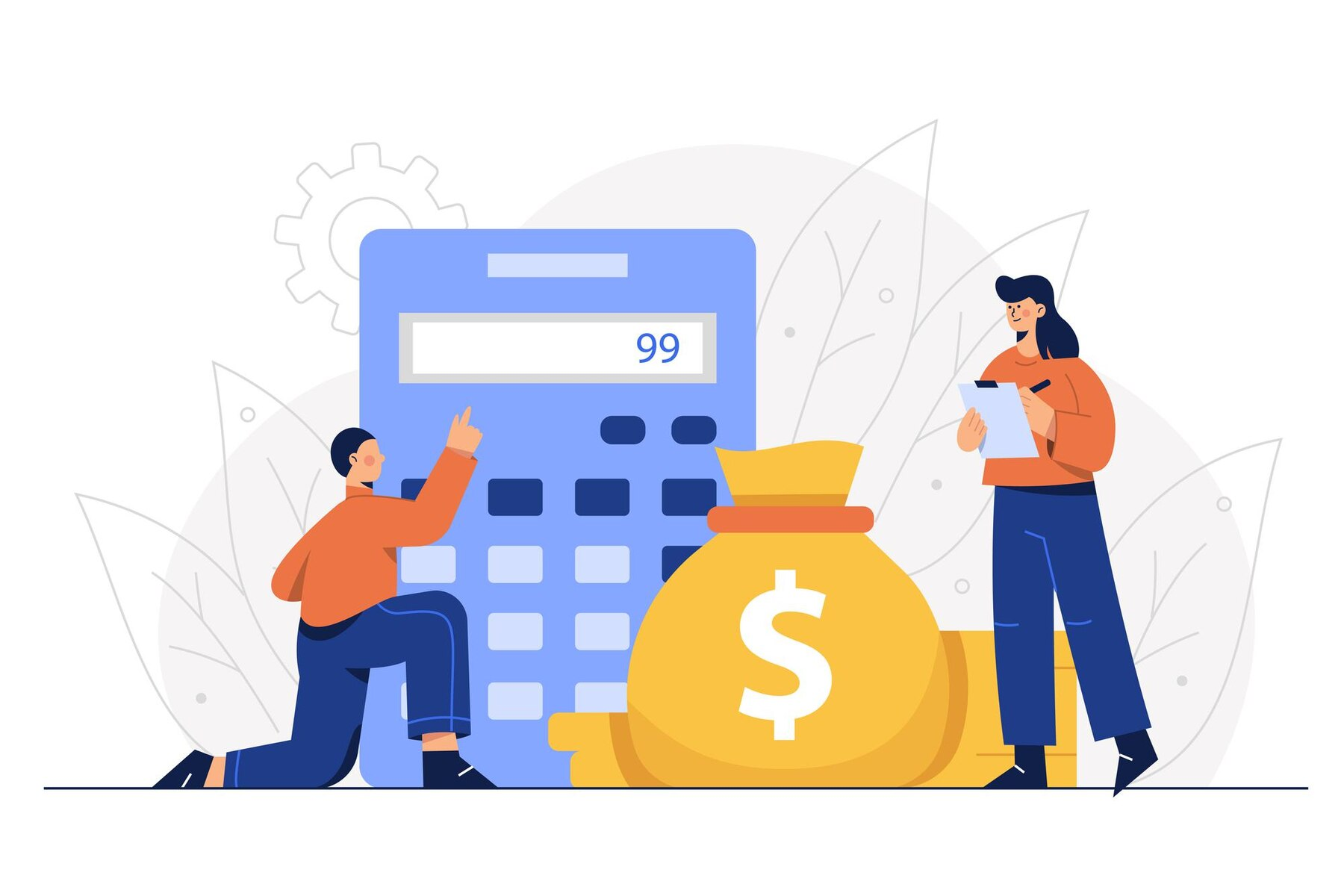Effective Price Optimization: A Practical Guide For Dropshippers

Online retailers are compelled to compete on price. Consumers have become increasingly price-sensitive due to the rising costs of living and transparency of online prices. To appeal to such a price-conscious audience, optimizing your pricing strategy is essential.
No one-size-fits-all pricing strategy exists for all businesses. And, of course, your pricing strategy must align with your business objectives and long-term goals. However, some practices are indispensable for every eCommerce business, regardless of its size. This guide will walk you through the key steps to effectively optimize your pricing.
By mastering these elements, you can develop a pricing strategy that meets your business objectives and resonates with your customers, setting the stage for long-term success and profitability.
What Is Price Optimization?
Pricing optimization is a strategy used in marketing and retail to determine the optimal price point for a product or service, aiming to maximize revenue while considering consumer demand and market conditions.
This approach combines art and science, leveraging data analysis, economic theories, and market trends to set effective prices.
Strategies to Optimize Pricing for Your Business

Setting the right price starts with knowing your customers
To price your product or service profitably, it's important to understand your target market first.
Ask yourself: What do your customers need and want? How much are they willing to spend? By getting to know your customers better, you can find a price that works for them, while still allowing you to make a profit.
Here are some effective ways to gain insights into your customer base:
➡️ Surveys and feedback: Collect customer data through online surveys and feedback forms.
➡️ Social media: Engage with customers on social media to gauge their preferences for your products and services.
➡️ Customer interviews: Have one-on-one conversations with customers for deeper insights.
➡️ Focus groups: Use group discussions to understand customer reactions and ideas.
➡️ Market research: When pricing products, study market data and its influence on customer behavior.
➡️ Sales data analysis: Examine sales patterns to identify customer preferences.
➡️ Customer reviews: Monitor feedback on your own website, as well as external ones, for honest opinions.
➡️ Competitor analysis: Learn by observing how competitors engage with their customers.
Know your costs
If you’re in the dropshipping business, keeping a close eye on your costs is a key part of the pricing process. While this might seem challenging at first, breaking it down makes it more manageable.
Start by assessing the cost price of the products from your suppliers. Next, factor in any additional charges they impose, such as shipping or handling fees. It's also important to consider your operating costs, including website hosting, platform fees, and digital marketing.
Remember, while dropshipping doesn’t come with traditional inventory or warehousing costs, the expenses mentioned above are vital to consider when setting the right prices and ensuring you generate profit.
Explore different pricing strategies
In the world of business, selecting the right pricing strategy is crucial for success. Different strategies can be applied, depending on your market, cost structure, and customer base.
Here’s a closer look at the various pricing strategies:
🔸 Cost-plus pricing: This is one of the most straightforward pricing methods. It involves adding a markup to the cost of producing your product or service. For instance, if it costs $50 to produce an item and you want a 20% profit margin, you would sell it for $60. This method ensures all costs are covered and a profit is made, but it doesn’t consider market demand or competitor prices.
🔸 Value-based pricing: This strategy determines prices based primarily on the perceived or estimated value of a product or service to the customer, rather than on the exact cost of producing it. If your product or service offers unique benefits or features that are highly valued by customers, you can set a higher price. This requires a deep understanding of your customer's needs and how much they are willing to pay for those benefits.
🔸 Competitive pricing: Here, you set your prices based on what competitors are charging. This strategy is common in markets with several competitors offering similar products or services. It involves setting prices at, above, or below competitors’ prices. This requires thorough market research to understand competitor pricing and determine where your offering fits.
🔸 Penetration pricing: This approach involves setting a lower initial price for a new product or service to attract customers and gain market share quickly. After establishing a foothold, prices can gradually increase.
🔸 Psychological pricing: This strategy uses pricing techniques that have a psychological impact. For example, setting the price at $9.99 instead of $10 can make a price seem lower.
🔸Dynamic pricing: Common in online retail and services, this strategy involves changing prices based on real-time supply and demand. For instance, prices may increase during peak demand periods.
💡 Do you want to learn more about eCommerce pricing strategies? Check out our comprehensive guide here.
Use discounts and promotions wisely
Discounts and promotions are great for getting more people interested in your business and bringing in new customers, but it's important to use them carefully.
If you offer too many discounts, you might lose money. Also, if your customers see discounts all the time, they might start expecting them and may be less inclined to pay the full price.
The key to determining the optimal price point is finding a good balance between attracting people with special deals and keeping your business healthy and profitable.
|
💡Pro Tip: Provide Customers With Personalized Discounts Boost sales and customer loyalty by offering personalized discounts tailored to each shopper's history and preferences—a strategy proven to significantly increase purchase likelihood and build a stronger connection with your customers |
Use price optimization software
Using price tracking software as a service (SaaS) is efficient and considerably cheaper than building one, and it doesn’t require maintenance or technical knowledge.
Price optimization software is a type of advanced analytics tool designed to help businesses determine the most effective pricing strategies for their products or services.
This software employs various data analysis and modeling techniques to predict how different pricing strategies will impact demand, revenue, and profitability.
The primary goal of price optimization software is to find the optimal price that maximizes a business's objectives, such as profit, sales volume, or market share.
Key features and functions of price optimization software include:
📊 Data integration: Gathers and integrates data from various sources, including historical data, customer behavior data, market trends, competitor pricing, and cost information to figure out the best price
📊 Predictive modeling: Utilizes machine learning to forecast how different pricing strategies will affect customer demand and sales
📊 Price elasticity analysis: Determines customers' sensitivity to price changes, helping businesses understand the potential impact of adjusting prices
📊Segmentation: Analyzes customer data to identify a particular customer segment, each with unique pricing sensitivities and preferences
📊Dynamic pricing: Offers the ability to adjust prices in real-time based on changing market conditions, such as fluctuations in demand, inventory levels, or competitor actions
📊Optimization algorithms: Uses price optimization models to suggest the best pricing strategies that align with a business’ goals while considering competition and customer satisfaction constraints
📊Reporting and analytics: Provide comprehensive reporting tools and analytics dashboards to monitor the performance of pricing strategies and make data-driven decisions
By leveraging tools like these to manage prices, businesses can make more informed pricing decisions, enhancing profitability and competitiveness in the market
The best price optimization solutions
BlackCurve
BlackCurve is a web-based software focused on price optimization, primarily targeting retailers of various sizes. Its main function is to aid in making informed pricing decisions with an emphasis on efficiency and profit maximization.
The software is designed to help manage inventory and encourage sales, reducing reliance on discount strategies. BlackCurve supports integration with several platforms, including Magento, BigCommerce, and Amazon, and is known for its quick setup process.
|
Pros ✅ Automation of pricing rules ✅ Can handle complex pricing rules ✅ Allows businesses to free up time and resources |
Cons ❌ Some users find the user interface outdated ❌ Steep learning curve ❌ Navigation can be confusing |
PriceFX
Pricefx is a price optimization tool designed for dynamic pricing, mainly targeting eCommerce retailers.
To adjust pricing, it employs specialized algorithms that factor in live data, including weather conditions, booking trends, and customer profiles.
The tool is versatile, useful for predicting sales volume and revenue, and can also integrate with other systems through APIs.
PriceFX is suitable for various settings, including online stores and physical point-of-sale systems, offering a range of pricing models to suit different business needs.
|
Pros ✅ Can integrate external data sources effectively ✅ Offers robust simulation and forecasting of volumes and revenue ✅ Known for its stable and reliable performance |
Cons ❌ Steep learning curve ❌ Real-time capabilities need improvement |
Test different prices
Exploring pricing for a product involves looking at many possible prices. The optimal price often changes over time.
Take headphones, for example. If they're priced at $150, they might sell to 50 customers, making $7,500. But if the price drops to $130, and 65 customers buy them, sales could increase to $8,450. This shows how pricing decisions can affect sales.
Finding the best price is a constant process, especially online, where prices can change quickly. Pricing software can help by setting prices based on rules, like being 10% cheaper than average or costing $10 less than the cheapest competitor. This helps retailers stay competitive and test different prices to improve their profits.
The search for the best price is a continuous one, and the right tools can make it easier to manage.
Try Spark Shipping's automated pricing feature
If all of this seems overwhelming, Spark Shipping is here to help. Our automated pricing feature offers a seamless solution for testing various price points in the fast-paced eCommerce environment.
This feature automatically connects you with vendors, allowing real-time pricing updates and the flexibility to set specific pricing rules and overrides. For instance, you can easily adjust prices in response to vendor requirements or market changes, ensuring your pricing strategy remains competitive and adaptable.
An additional layer of control is provided by Spark Shipping's system. The system holds out on price changes, such as a 25% increase, until you approve them. This ensures that you have the final say in any price changes.
This balance of automation and user control plays a key role in maintaining optimal pricing, as it allows for continuous testing and adaptation of price points to maximize revenue and profit margins, while ensuring that strategic decisions are always in the hands of the business.
|
🎇 Want to try this pricing automation feature out? Sign up for a free demo of Spark Shipping today! |
Takeaways
Effective price optimization is crucial for the success of your business. It involves understanding your customers, knowing your costs, and exploring various pricing strategies. Using promotions and discounts in a thoughtful way also plays a key role.
Incorporating price optimization software can be extremely beneficial, as it provides data-driven pricing suggestions. Additionally, testing different price points is essential to find what works best.
By carefully considering these aspects, you can develop a pricing approach that supports your business goals and appeals to your customers, leading to sustainable growth and profitability.
Popular Posts
Posts by Topic
- Dropshipping (10)
- Dropshipping Automation (5)
- Dropship Suppliers (4)
- EDI (3)
- Pricing Strategy (3)
- Amazon Seller Central (2)
- Automotive Dropshipping (2)
- Conversion Rate Optimization (2)
- Dropshipping Products (2)
- Order Management (2)
- Shipping (2)
- Vendor Product Catalog (2)
- AI Dropshipping (1)
- Dean Soto (1)
- Feature Announcement (1)
- Online Empire Academy (1)
- Product Optimization (1)
- Walmart Marketplace (1)
- referral marketing (1)